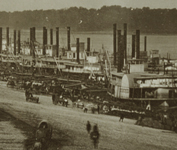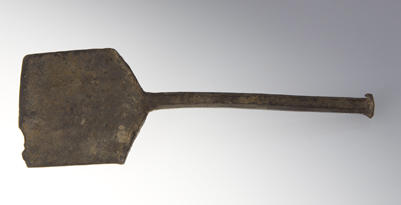The Two Missouris: Slave Labor or Free Labor?
Go BackIn the agrarian state of Missouri, St. Louis stood apart. Differences between urban and rural Missourians were striking. The rural counties depended on an enslaved labor force, whereas St. Louis fashioned itself after Northern cities, using mostly free labor as industries grew. A burgeoning metropolis, St. Louis boasted large hotels, warehouses, multistoried businesses, soaring church spires, and smoke-belching factories. Dozens of steamboats lining the busy St. Louis levee and trains waiting on the Illinois side characterized the city as a center of commerce and transportation. As a percentage of total population, the number of slaves in the city decreased by 1860, but Missouri's identity as a slave state threatened St. Louis's progress with investors and merchants from the northeast.
Meanwhile the state's agricultural center averaged a 29 percent growth in slave population. The seven counties making up this center, later known as "Little Dixie," were in the Boon's Lick region along the Missouri River. Slaveholders often had considerable control over the state's politics and banking concerns. Missouri's two divergent economies remained interdependent, but the gulf between them would only grow as industrialization progressed, resulting in sectional alliances in the impending secession crisis and war.



